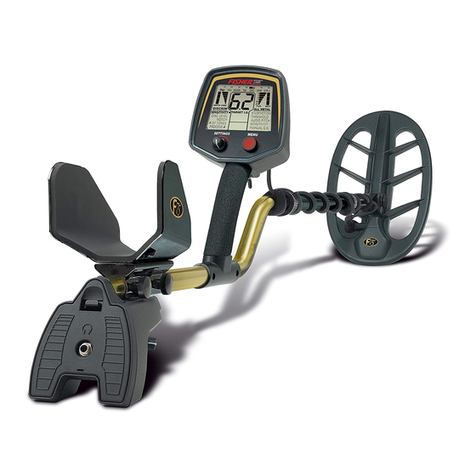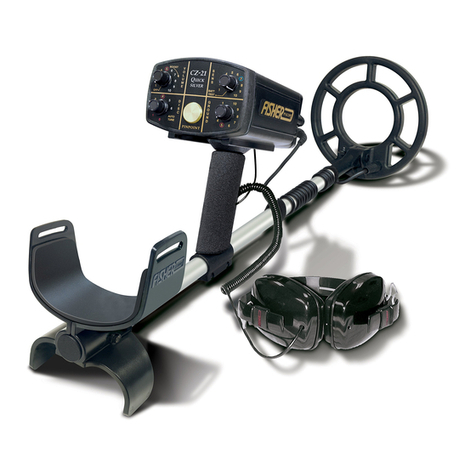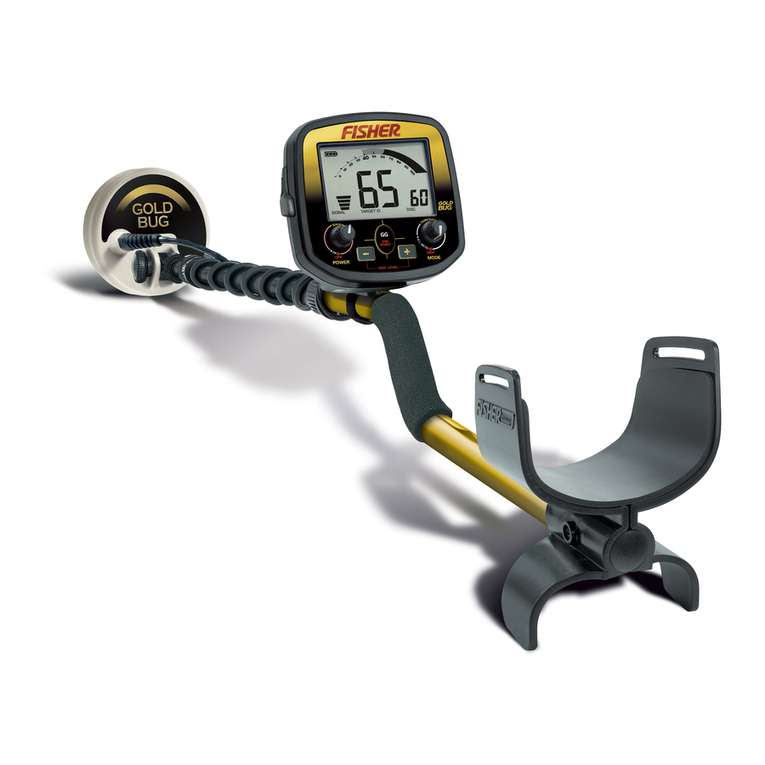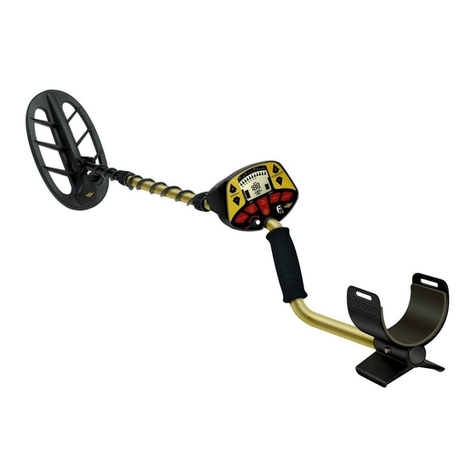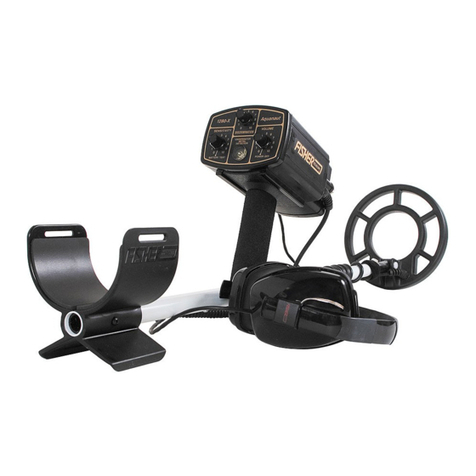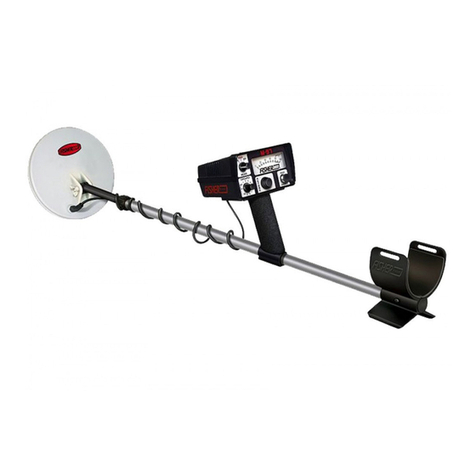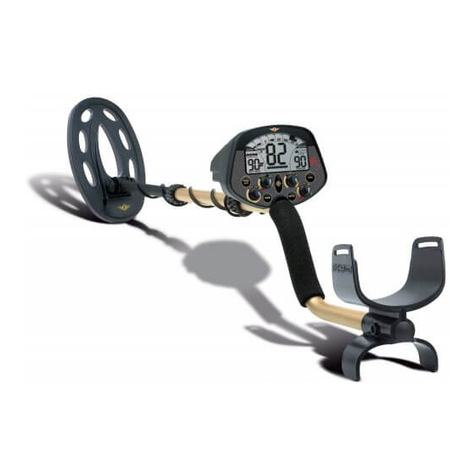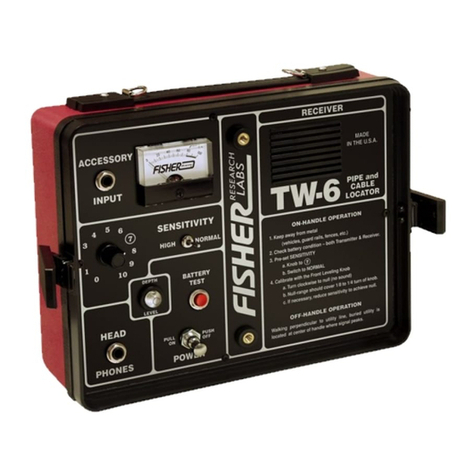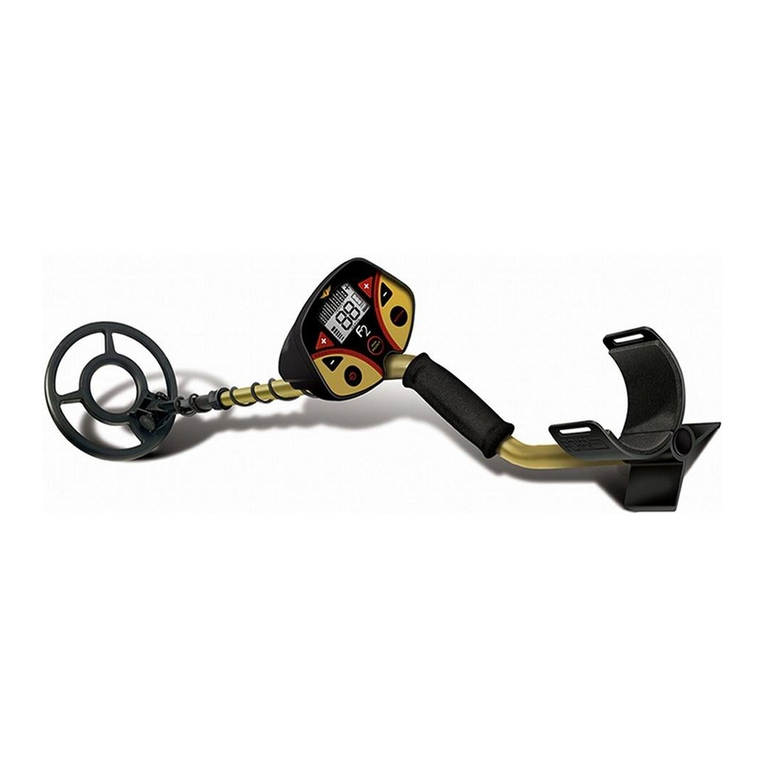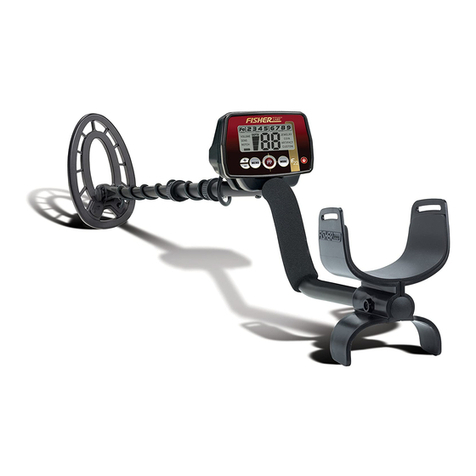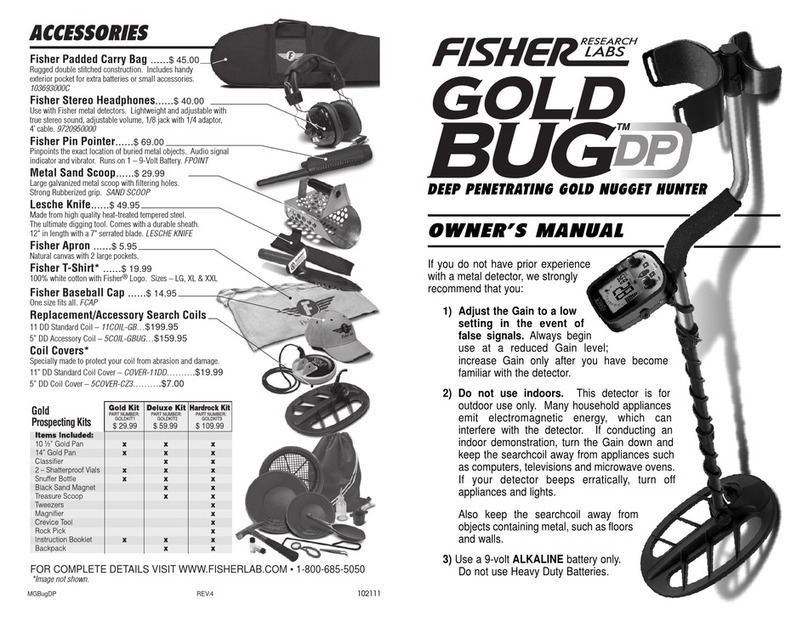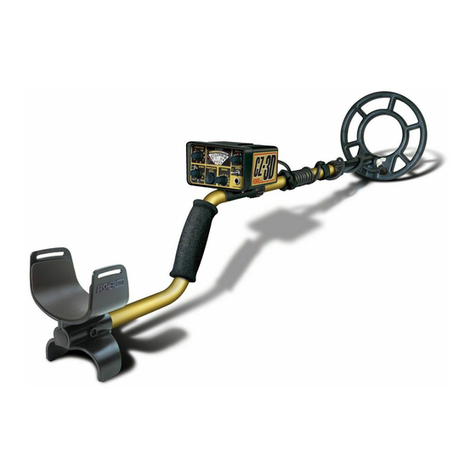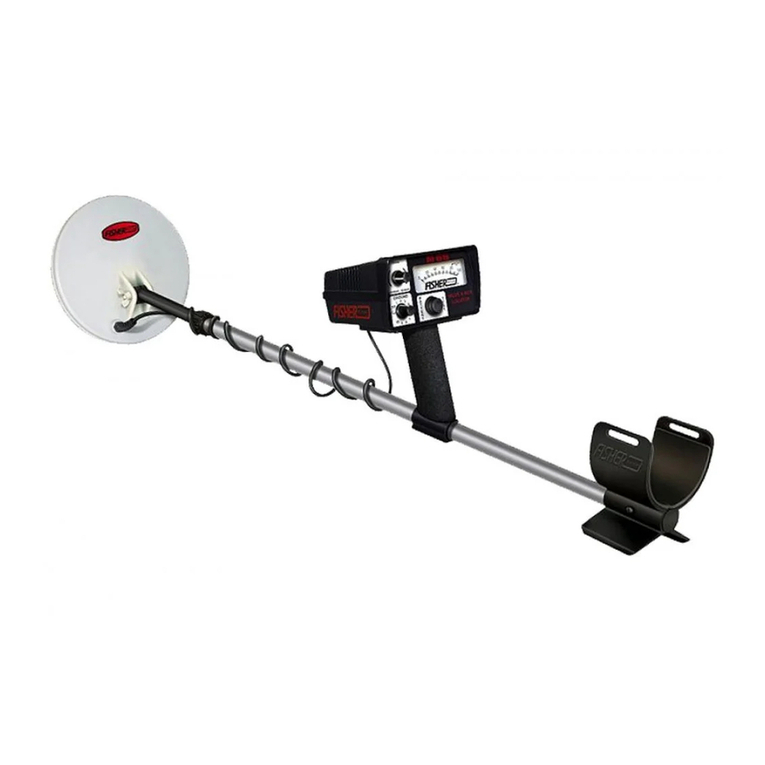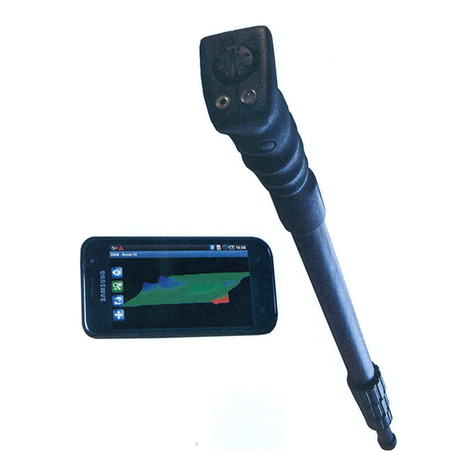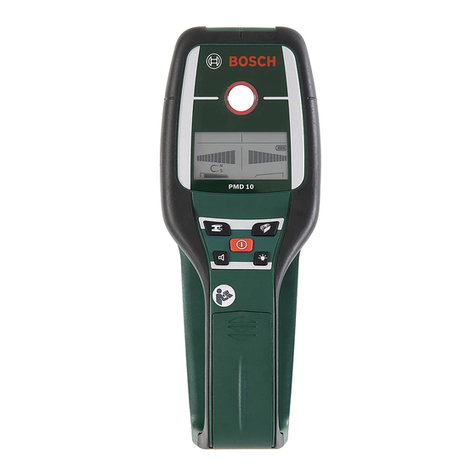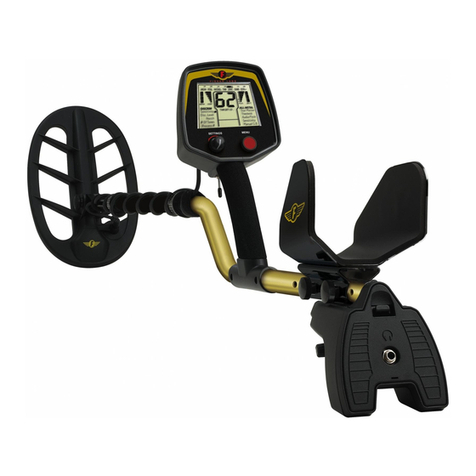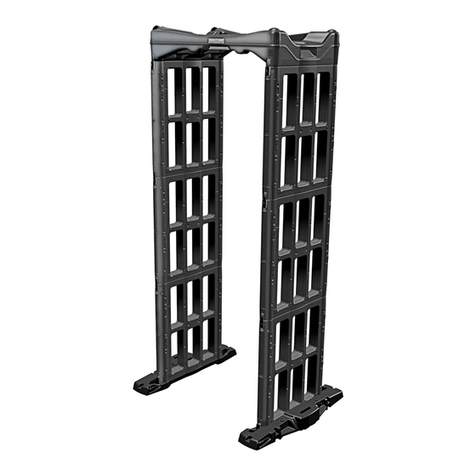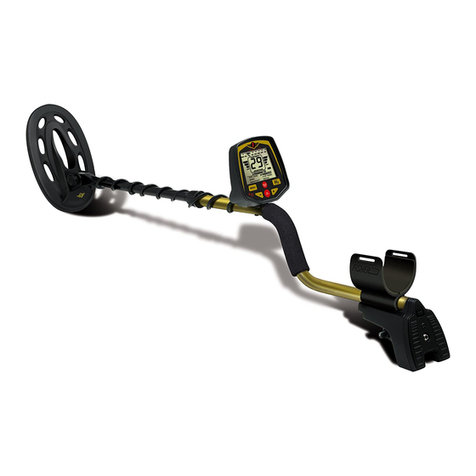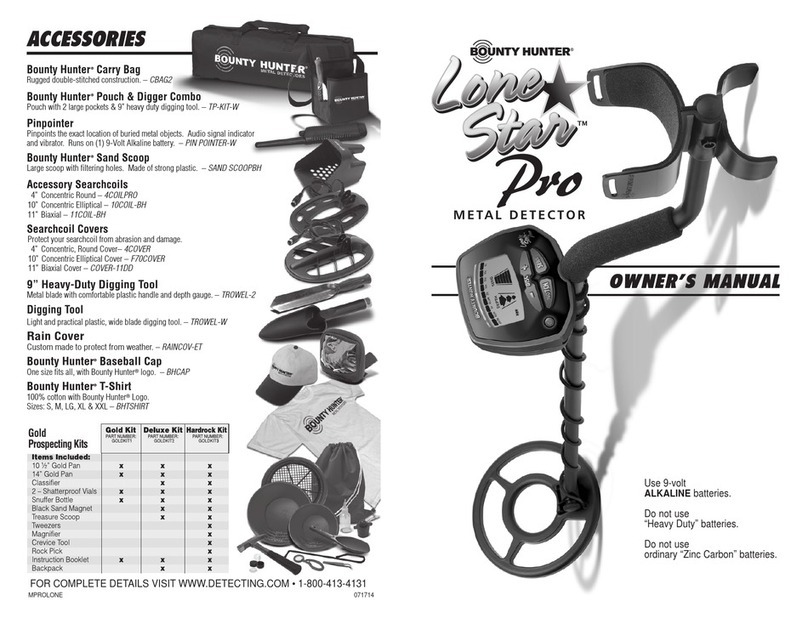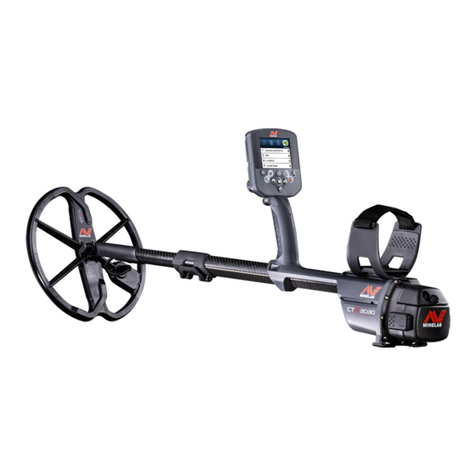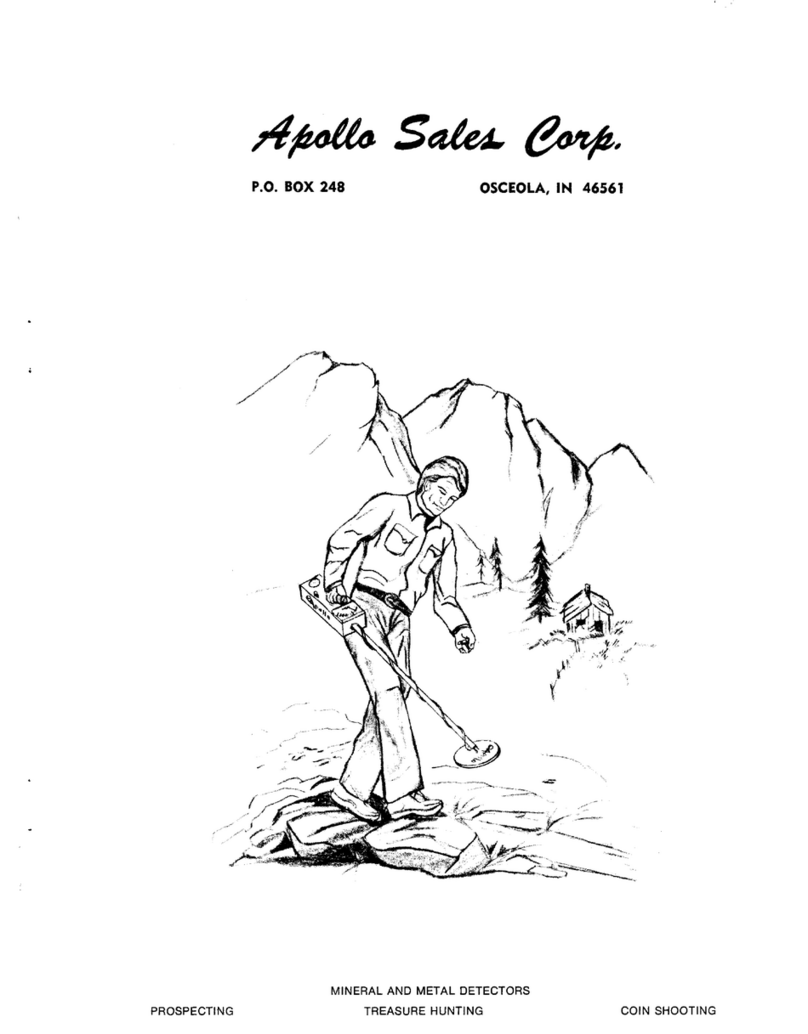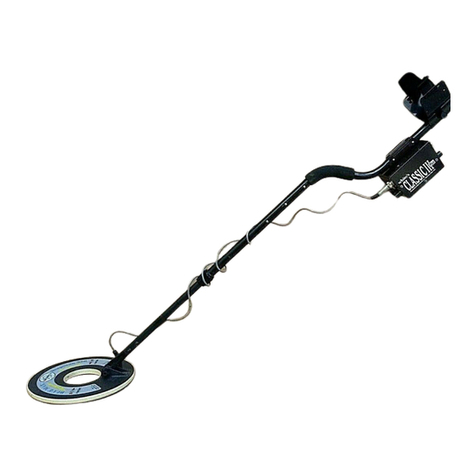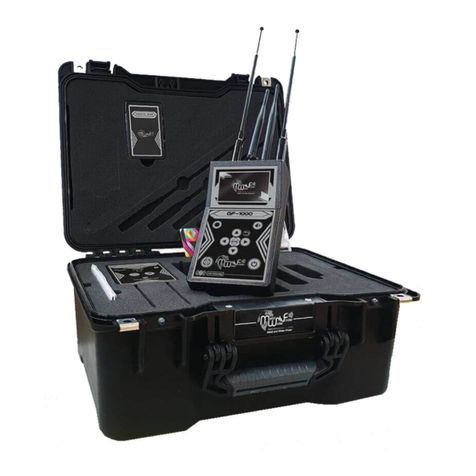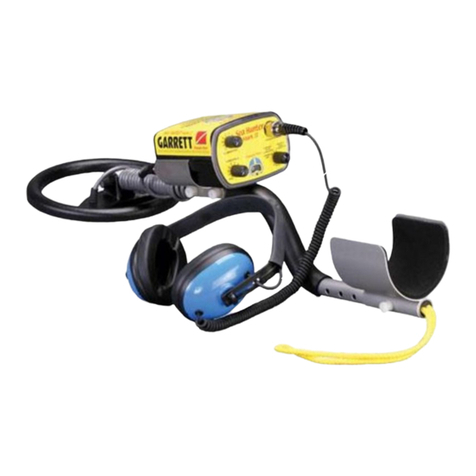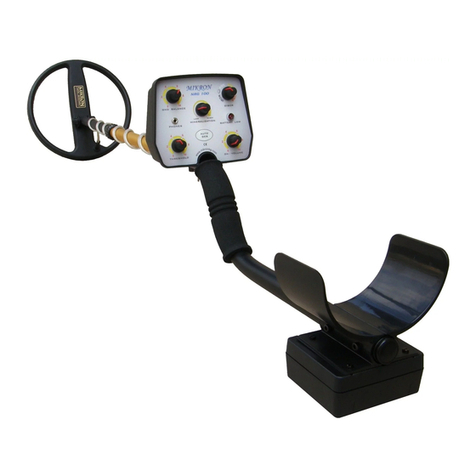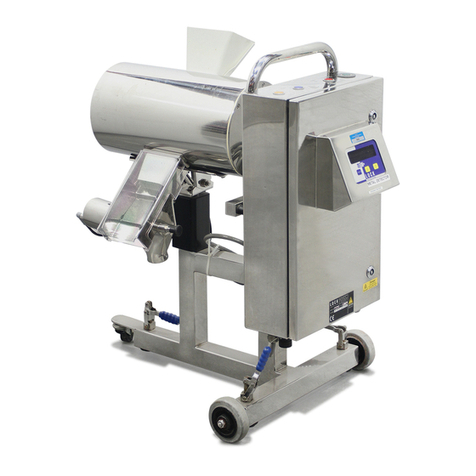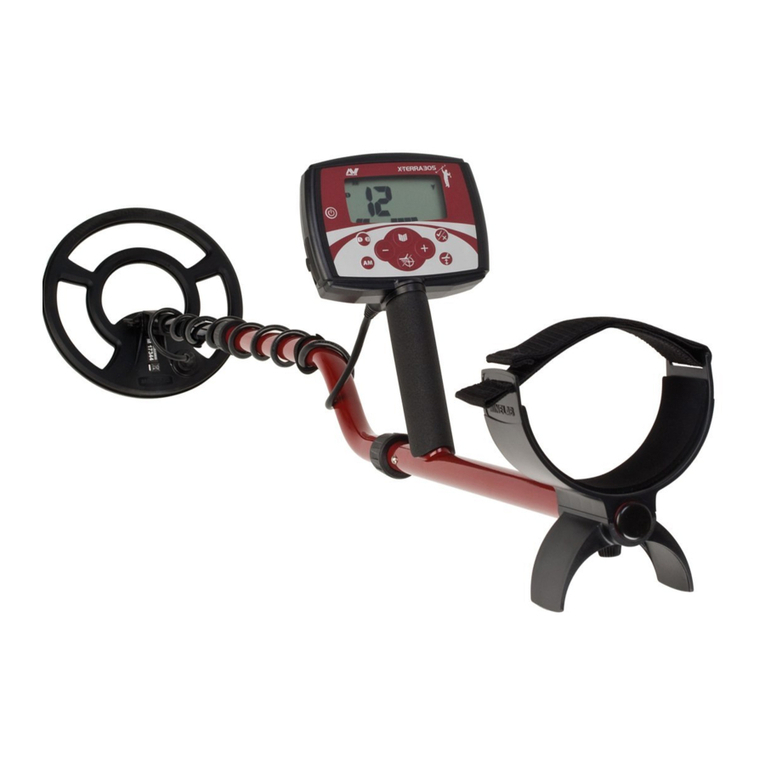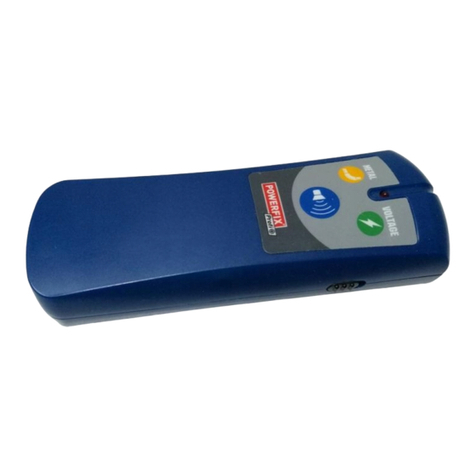T
T
h
h
e
e
C
C
o
o
n
n
t
t
r
r
o
o
l
l
K
K
n
n
o
o
b
b
f
f
u
u
n
n
c
c
t
t
i
i
o
o
n
n
s
s
a
a
r
r
e
e
a
a
s
s
f
f
o
o
l
l
l
l
o
o
w
w
s
s
:
:
GND BAL — Ground Balance
Control Knob
Rotate GND BAL to change
the detector’s internal Ground
Balance Setting.
By calibrating the detector to
the actual Ground Phase of
the soil you are searching, you
will cancel out signals from the
earth’s naturally occurring
minerals, thereby improving your ability to detect buried metal objects.
The default ground setting is 82.
The knob has no minimum or maximum set point; it rotates
continuously without a stop.
The faster you turn the knob, the more quickly the ground setting
changes. To make small changes to the ground setting, move the
knob slowly, one click at a time.
There are over 1,000 different ground balance settings, but only 100
different numbers are displayed on the screen, as 2-digit numbers
from 00 to 99. The displayed setting will change by one number for
roughly 10 clicks of the knob.
See section on Ground Balancing for a detailed description.
GAIN
The gain control increases, or multiplies, the signal from a buried metal
object.
Rotate the GAIN knob clockwise in order to increase the size of signals
generated. For maximum
detection of the smallest or
most deeply buried objects,
increase the gain. To minimize
the weakest signals, set the
gain at a low level.
There are 20 gain settings. 5 is
the lowest; 99 is the highest.
9
9
CONTROL PANEL
1
1
6
6
DEPTH AND TARGET DISPLAY
READING THE DISPLAY
The Liquid Crystal Display (LCD) shows
the PROBABLE identification of the
targeted metal, as well as the
PROBABLE depth of the target, in
inches.
The detector will normally register a
repeating, unchanging target
identification when a buried target
has been located and identified. If,
upon repeated passes over the same
spot, the target identification reads
inconsistently, the target is probably a
trash item, oxidized metal, or too
deep to be classified accurately. With
practice, you will learn to unearth
only the more repeatable signals.
The segment identifications are highly
accurate when detecting the objects
described on the screen. However, if
you register in a given category for an
unknown buried object, you could be
detecting a metallic object other
than the object described on the
screen, but with the same metallic
signature. Also, the greater the
distance between the target and the
coil, the less accurate the target
identification.
G
G
O
O
L
L
D
D
T
T
A
A
R
R
G
G
E
E
T
T
S
S
Gold objects will
register on the left side of the LCD
scale. Gold is categorized depending
on its size. The smaller the gold object,
the further to the left it will register.
S
S
m
m
a
a
l
l
l
l
g
g
o
o
l
l
d
d
i
i
t
t
e
e
m
m
s
s
will register under
Fe or Foil.
M
M
e
e
d
d
i
i
u
u
m
m
-
-
s
s
i
i
z
z
e
e
d
d
g
g
o
o
l
l
d
d
i
i
t
t
e
e
m
m
s
s
will usually
register under 5¢ or Tab.
L
L
a
a
r
r
g
g
e
e
g
g
o
o
l
l
d
d
i
i
t
t
e
e
m
m
s
s
will usually
register under Tab or Zinc.
S
S
I
I
L
L
V
V
E
E
R
R
T
T
A
A
R
R
G
G
E
E
T
T
S
S
:
:
Silver objects will
normally register to the right of the
scale, under Dime, Quarter, or 50+,
depending on the size of the object.
The larger the object, the farther to
the right it will register.
I
I
R
R
O
O
N
N
:
:
Fe is the scientific designation
for Iron. Most iron objects will fall into
the Fe category. Very large iron
objects like a manhole cover will
usually fall into the 50+ category.
5
5
¢
¢
:
:
Nickels and most newer pull-tabs
will register here.
T
T
A
A
B
B
:
:
Older pull-tabs and ring-pulls
from beverage cans usually will
register here. Many gold rings will also
register here.
Z
Z
I
I
N
N
C
C
/
/
1
1
¢
¢
:
:
Newer pennies (post-1982)
will register here. Many non-U.S. coins
will also register here.
Screw caps from glass bottles will
register here. Large gold rings, like a
class ring, could also register here.
D
D
I
I
M
M
E
E
:
:
Dimes and pre-1982 copper
pennies will register here.
C
C
a
a
u
u
t
t
i
i
o
o
n
n
:
:
The target indications are
visual references. Many other types of
metal can fall under any one of these
categories. While the F5 will eliminate
or indicate the presence of most
common trash items, it is impossible to
accurately classify ALL buried objects.
F5-manual-SPREADS(24pg).qx 6/7/10 11:07 AM Page 9













